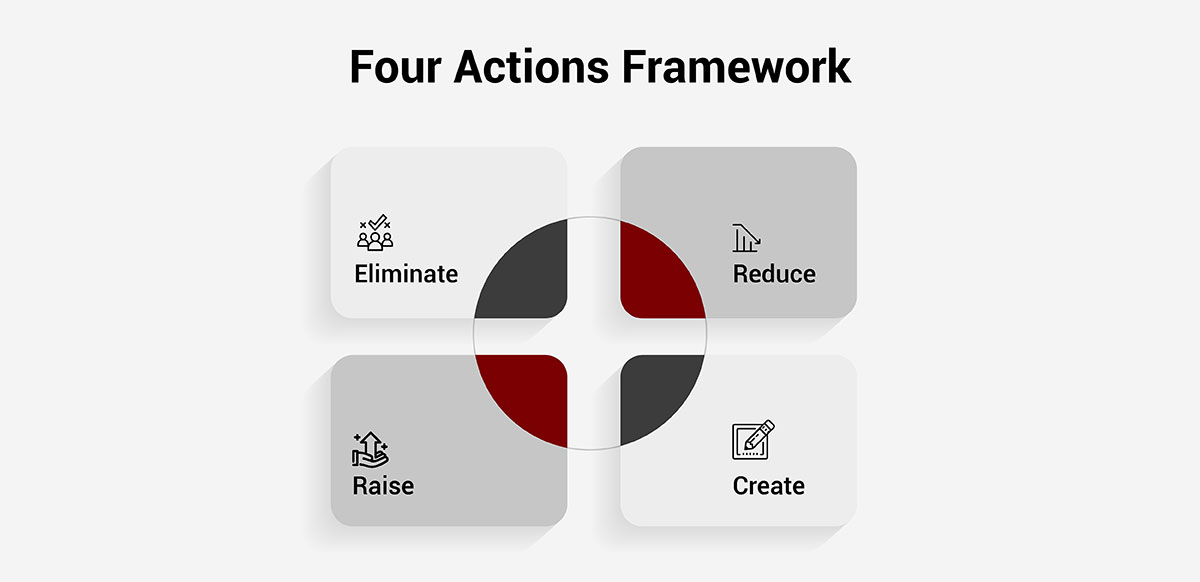Professional Development
Finding Untapped Markets: An Introduction to Blue Ocean Strategy

Exploring Blue Ocean Strategy for Business Growth
In today’s competitive markets, traditional strategies often lead to diminishing returns. To achieve sustainable growth, businesses must transcend competition and delve into new market spaces. This is where the Blue Ocean strategy comes into play.
Developed by Professors W. Chan Kim and Renée Mauborgne, the Blue Ocean strategy focuses on creating uncontested market space through value innovation to make competition irrelevant. This article delves into the core principles of the Blue Ocean strategy and offers a step-by-step guide on applying its strategic frameworks to drive innovative growth.
Understanding the Blue Ocean Strategy
The Blue Ocean strategy is about creating new markets rather than competing in existing ones. Unlike traditional strategies where companies vie for market share, Blue Ocean strategy aims to increase demand by offering unique value propositions. The goal is to make competition irrelevant by providing unparalleled value to buyers and the business, thus opening up new opportunities in untapped market spaces.
Key components of the Blue Ocean strategy include:
- Value Innovation: Creating value for both buyers and the business through innovation by identifying current and future consumer needs beyond existing market boundaries.
- Strategic Frameworks: Utilizing tools like the 4 Actions Framework and Strategy Canvas to reconstruct market boundaries systematically and transition from red to Blue Oceans.
- Co-creation: Involving all stakeholders, including customers, in the ideation process to understand unmet needs for successful implementation of the Blue Ocean strategy.
Benefits of Blue Ocean Strategy
- Creation of uncontested market space: By pioneering new markets, companies can tap into uncharted territories without direct competition, leading to significant growth opportunities.
- Reduced business uncertainty: Blue Ocean strategies mitigate uncertainty by operating in new market spaces, free from intense competitive pressures and disruptions.
- Increased profits: Occupying a Blue Ocean allows companies to set prices without competitive constraints, leading to higher margins and sustainable profitability.
- Growth through value innovation: By expanding the market pie through value innovation, companies can attract new customers and drive exponential growth.
The Four Actions Framework

- Eliminate: Identify factors to eliminate that have been industry norms, removing sources of competition.
- Reduce: Lower non-core attributes below industry standards to drive down costs.
- Raise: Enhance core benefits well above industry standards through value innovation.
- Create: Introduce entirely new factors to satisfy customer needs in innovative ways.
The Strategy Canvas
The Strategy Canvas is a visual tool that maps out strategic moves of competitors and alternatives to analyze value/cost trade-offs in an industry. It aids in identifying strategic moves to transition to a profitable Blue Ocean.
- Step 1: Form a Strategic Group – Assemble a diverse team for varied perspectives.
- Step 2: Map the Existing Strategy Canvas – Analyze current industry strategies for insights.
- Step 3: Apply the Four Actions Framework – Brainstorm non-traditional strategic moves.
- Step 4: Test Feasibility and Attractiveness – Refine Blue Ocean ideas based on feedback.
- Step 5: Develop a Business Model – Integrate elements into a cohesive business model.
- Step 6: Execute the Strategy – Roll out the plan and adapt to market changes for sustained growth.
Real-World Examples of Blue Ocean Strategy
- Netflix: Revolutionized video rental with a DVD-by-mail model.
- IKEA: Made quality furniture affordable through innovative production and sales methods.
- Apple: Redefined the computer industry with a focus on design and user experience.
- Airbnb: Transformed lodging by offering private homes as an alternative to hotels.
- Costco: Established a membership warehouse club model for bulk products.
Mastering Blue Ocean Strategy
Successfully implementing Blue Ocean strategy requires diligence, adaptability, and continuous innovation. It’s a process that demands ongoing refinement to stay ahead of the competition. By monitoring market trends and having secondary Blue Ocean ideas ready, organizations can sustain growth leadership over time.
By leveraging strategic frameworks and tools, businesses can innovate, create value, and expand into new market spaces effectively, positioning themselves for long-term success.
Conclusion
In conclusion, the Blue Ocean strategy offers a strategic approach for sustainable growth through innovation and value creation. By applying its frameworks with precision and agility, businesses can navigate competitive waters and chart new territories for growth and profitability.
Mastering the Blue Ocean strategy is a journey that requires dedication and strategic vision, but the rewards of pioneering new markets and outperforming competitors make it a worthwhile endeavor for businesses seeking long-term success.
-

 Professional Development1 month ago
Professional Development1 month agoDrawing up your strategy
-

 Personal Growth2 months ago
Personal Growth2 months agoSucceeding as a ‘parentpreneur’: Top tips
-

 Videos2 months ago
Videos2 months agoGreat Leaders INSPIRE Others To Do Great Things
-

 Productivity1 month ago
Productivity1 month agoHow to Increase Remote Work Productivity
-

 Productivity2 months ago
Productivity2 months agoTips for Boosting Work Productivity
-

 Productivity2 months ago
Productivity2 months ago5 Ways to Increase Your Personal Assistant’s Productivity
-

 Leadership1 month ago
Leadership1 month agoHow to Tackle Big Challenges
-
Leadership1 month ago
Cutting Through the Clutter of Internal Communications






























